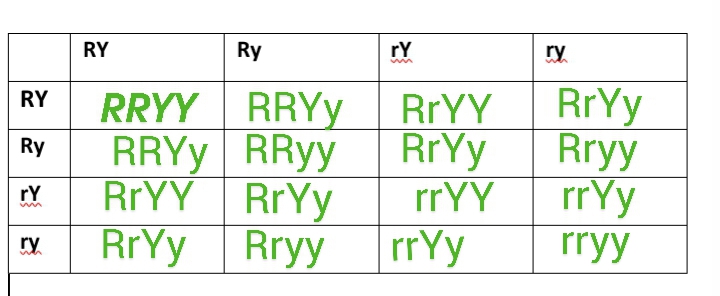Hi hivers, hope you're doing fine?
I welcome you to my blog!
Genetics has always been a topic of interest for biologists, healthcare practitioners and the scientific world at large. As a potential biologist, genetics is an important aspect when we try to breed organisms(plants and animals) of topnotch quality. Hence there is a need to properly understand the concept. This is what the article is aimed at!
So first off, What is Genetics?
Genetics is the branch of biology that deals with the transmission of hereditary and variation from parents to their offsprings. Without the knowledge of hereditary and variation, the definition of genetics will be meaningless. Hereditary is the heritable character (i.e character that can be inherited) passed from parents to their offsprings while variation is the differences that exist between the traits passed from parents to their offsprings. When a trait not present in the parent is found in the children, it is called variation.
Moving on, I'd like to briefly discuss certain terms in Genetics. These will help make us understand the concept much better!
Phenotype: is the observable(physical) features of the character of an organism resulting from interaction between its gene and its environment. For example, using height as a character, (in height its either you're tall or short/dwarf). TT, Tt, is a tall organism while tt is a short organism phenotypically. Phenotypically, TT and Tt are tall organisms i.e they're the same but genotypically they're not the same.
A man who naturally has a slim body later develop muscles and a build body due to the nature of his job where he had to lift bags of cement per day. His body shape is accompanied by an environmental factor, therefore, phenotype is applicable.

Next term on the list , is Genotype:
Genotype: is the sum total of the gene an organisms inherited from the parent. TT and Tt are different genotypically. TT is homozygous tall organism while Tt is an heterozygous tall organism.
A lady who has a light complexion can turn out to be dark in complexion if she changes her environment to an area where there is much sun. Phenotipically she's dark but initially she has a gene for light skin i.e she's light genotypically but her skin complexion was altered by environmental factor(sunlight).
Another term used in genetics we have to consider is
Homozygous: is when an organism has the same allele for both copies of a given gene. For example TT and tt are both homozygous. Homozygous can occur in 2 form which are; dominant and recessive.
Heterozygous: is when an organism has two different alleles for a gene. For example, Tt(T for Tall while t represents short). Organism that have a character like this are said to exhibit heterozygous character.
Gene: is a unit of heredity; a segment of DNA or RNA that is transmitted from one generation to the next, and that carries genetic information such as the sequence of amino acids for a protein.
Dominant characters: are the characters that can be expressed without the influence of any contrasting character. For example, Tt shouldn't be called a tall plant because it is composed of T & t alleles, but because T is a dominant character it has suppressed the power of the small t that's why Tt is called a tall organism. Using colour (red) as a character, Rr will be called a red plant because R is a dominant character. R is the dominant while r is recessive.
Recessive characters: are the characters whose power is masked by the dominant character and cannot express its power in the presence of the dominant character.
Character: is the trait passed from parent to the offspring. It is also known as trait. Examples of character in organisms are; height, color/complexion, e.t.c.
F1 generation: is the crossing between homozygous stock of parents. It must be a cross between 2 homozygous parents before it can be called F1 generation. For example, a cross between TT x tt. 4 offsprings will be produced which are; Tt, Tt, Tt, Tt.
X in crossing means mating.
.jpeg)
In the above diagrammatic illustration, it is seen that the offspring of the F1 generation are all the same i.e they are all Tt. That's a point to note that all the offsprings of F1 generation will be the same thing for a monohybrid crossing.
F2 generation: is the crossing between offspring of the f1 generation. The offspring of the F1 generation are Tt, Tt, Tt, Tt, then pick and cross any two to form your F2 generation. That's Tt x Tt, the offspring will be TT, Tt, Tt, tt. Remember it is for a monohybrid cross.
Monohybrid crossing: is the crossing that involve a single character. For example, height. In height, either you're tall or short.
Dihybrid crossing: is the crossing that involve two pairs of contrasting character. For example, a cross between round yellow and wrinkled green plant. The characters involved here is two which are seed colour ( yellow and green) and seed texture( round and wrinkled).

In the above image, the letters written with black are the parents while the one written with green are the offsprings of the F2 generation with
Phenotypic ratio- 9:3:3:1
Genotypic ratio- 1:2:2:4:1:2:1:2:1
The total number of offsprings produced here is 16, this can be gotten by adding the figures of the phenotypic ratio together or the genotypic ratio. Any way you put it, the phenotypic and genotypic ratio must have the same value.
Congratulations @sirpee6! You have completed the following achievement on the Hive blockchain and have been rewarded with new badge(s) :
You can view your badges on your board And compare to others on the Ranking
If you no longer want to receive notifications, reply to this comment with the word
STOPTo support your work, I also upvoted your post!
Do not miss the last post from @hivebuzz:
Support the HiveBuzz project. Vote for our proposal!
Thanks for your contribution to the STEMsocial community. Feel free to join us on discord to get to know the rest of us!
Please consider supporting our funding proposal, approving our witness (@stem.witness) or delegating to the @stemsocial account (for some ROI).
Please consider using the STEMsocial app app and including @stemsocial as a beneficiary to get a stronger support.
This is a decent effort that those new to genetics would find handy. However, there is enough room for improvement for everyone. Well done!
Thanks for the compliment. I believe next post will be more professional than this.
Thanks for sharing indepth about genetics. We are looking for a people like you in our community.
Your post has been submitted to be curated with @gitplait community account because this is the kind of publications we like to see in our community.
Join our Community on Hive